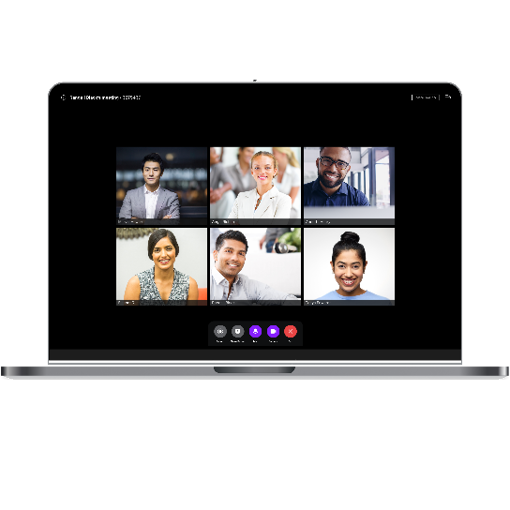Remote working hacks for Public Sector teams
Are you getting bored yet? Remote working was the exception, then became a novel way of working, and now, frankly, has become a bit of a grind ... though perhaps not as much of a grind as my 3 hour daily commute used to be.
With a permanent shift to remote working now apparent, public sector managers have been challenged to find new and effective ways to work, collaborate and report in a secure and responsible manner.
Shifting workloads from the office to employee homes has happened at pace, and civil servants have demonstrated resilience and flexibility in embracing remote working. However it has become clear that there are significant obstacles to negotiate.
Over the Summer (come back!) we surveyed central and local government delegates already signed up to Government Transformation Summit (17-19 November 2021) and found that the top three challenges they were experiencing were:
46% - Building trust with someone they have not met.
38% - Maintaining focus on their work and avoiding distraction.
34% - Managing work/life balance as the boundaries between each blur.
Personally, I’m surprised that onboarding new team members didn’t break the top three - but perhaps that’s because the public sector, for the most part, isn’t on a hiring spree right now.
The following list of remote working hacks has been built with the clever insights of others, from NHS, local and central government executives at all levels, including newly remote workers and long term distributed team members.
-
Create boundaries. Delivering too much output is a bigger danger than too little. It is very easy to stop taking breaks, and with the lack of natural distractions and informal discussions in the workplace, it can become difficult to see the boundary between home and work. Although it can be tempting to work flexibly in multiple locations in your home, it is best to define a physical space for your work that you can step away from. Where you live in a small or shared space, it may be possible to use music to create a rhythm to your work and create separation from your non-working routine. Try creating a playlist for work and use headphones to indicate when you should not be disturbed. Where space is shared, such as with partners and/or children, it is important to define who needs what to make this work.
-
Active communication. Send short updates throughout the day to preempt inbound queries and contribute to a positive work tempo. Keeping colleagues in the loop creates opportunities for asymmetrical communication. Summarise what you did yesterday, what you are doing today and what challenges you are facing.
-
Document everything. Ensure all communication is documented and searchable for colleagues after meetings and after 1:1 calls. Writing down verbal conversations ensures all team members are informed and up-to-date. When colleagues can’t see your computer screen it is important to make sure you’re describing what you see. Consider using chat applications where conversations are searchable by colleagues.
-
README. Giving and receiving feedback is essential to good teamwork - and doing this remotely is harder than in person. Make it as easy as possible for your teammates to give you feedback by letting them know your preferences with a Personal README. (Feel free to recycle the Government Transformation Magazine: Personal README Template.)
-
Assume positive intent. It is easy to get the tone wrong when writing a message, and equally easy to take it the wrong way when reading it. When an incoming email surprises you with its tone - try reading a message with a smile on your face, and clarify intent where necessary.
-
Express yourself. When we speak in person, we don’t aim for monotone - so likewise when it comes to communicating with your team express yourself. Use an emoji, exclamations or a gif to add in the tonal variety that is missing in written communication.
-
Visibility. Meet with each other face-to-face on a daily basis. Default to ‘video on’ to ensure that non-verbal cues are communicated in order to strengthen working relationships and avoid misunderstanding. If in doubt, jump into a screen share to literally ensure that everyone is on the same page.
-
Patience is a virtue. Never presume that people are available the minute that you need them. Unless a decision needs to be made immediately, give people time to respond to queries because they might be working on a different schedule.
-
Meetings become more important. Ensure that every meeting has an agenda for documenting discussions, decisions, and actions. Use shared documents to set meeting and team agendas. Encourage people to contribute in advance to get the most out of meetings. Video Conference meetings can reduce the scope for any one individual to dominate a discussion.
-
Micro-meetings. In the absence of the 15-second micro-conversations with colleagues around the proverbial office water cooler, managers need to enable the development of support networks by encouraging informal chat among team members. Leading by example and demonstrating that colleagues have permission is key to establishing this behaviour.
-
Technology. File-sharing capabilities, video conferencing, and data-transfer capabilities are all technically feasible and commercially available but contain a degree of risk to use. Public sector organisations should evaluate their approaches toward collaborative technologies that enable employees to work remotely by considering the risk of using these technology tools against that of not using them. Policy change and training can mitigate risk and allow certain digital tools to be used safely.
-
Security. Public sector bodies can use non-intrusive techniques to map assets and access tools, such as network metadata for visibility, along with leveraging host and endpoint-based approaches. Organisations also need to discover and understand asset communication flows and patterns. This allows them to monitor the traffic on their networks to ensure visibility on what information is being accessed and by whom. Following on from this, public sector bodies should implement authentication and access control policies based on their traffic. This enables agencies to see who has the right to access the network and limit and enact access control policies.
-
Seize the opportunity. Make a virtue out of necessity, and accelerate your adoption of digital tools to enable new and different ways of collaboration and communication. Rethink team structures, roles and processes in light of a new suite of capabilities. Easy to assume that remote working is less personal - but it allows you to see aspects of your co-workers’ lives that you otherwise might not see, such as choice of art, book collection, family. You need to over communicate - and by talking about these things, you get to know your colleagues better. Remote connections force you to become more personal - gaining insight into one another’s home environment (eg. art preferences, book choices, pets and family members) and supports the creation of stronger relationships with people you would not otherwise spend time with.
-
Respect limits. Being a healthy contributing member of the team requires work/life balance. Drinking a lot of water will force you to take regular toilet breaks. Use post-it notes on the walk to the toilet to reinforce positive behaviours - such as exercise breaks, walks in the garden, chatting with friends and informal chatting with colleagues. There’s always another email, chat query to be answered - so it is essential to know when to step away during the day, and when to turn the computer off at the end of work.




